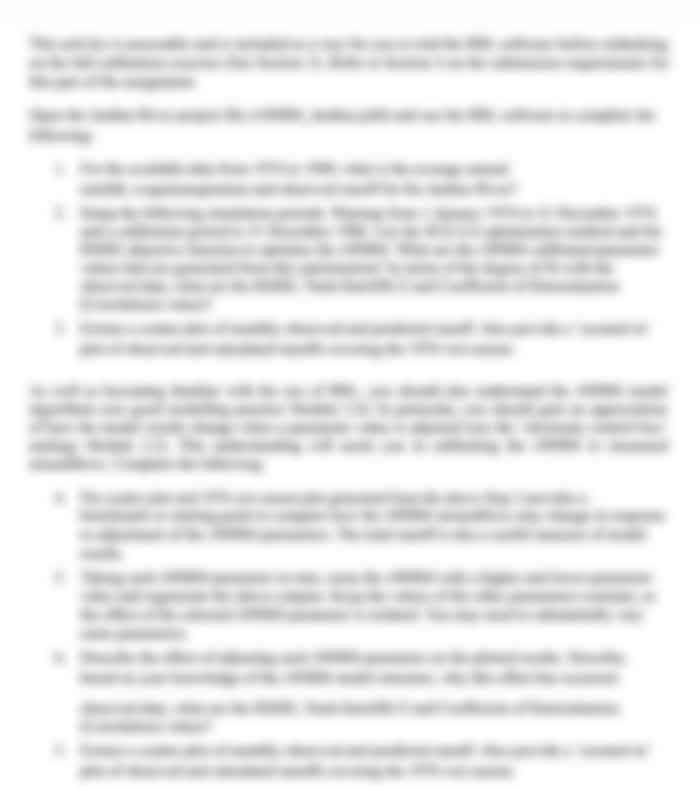Information for Starting a Business Assignment
- Country :
Australia
-
Assignment information for Starting a Business
Assignment 1
Due Week 4 (40% weighting): First draft business plan
Week 1: Strategy on a page.
The first assessment task for this unit is to start work on the first element of your business plan. This week, the goal is to produce a first draft one-page strategy document. A one-page document is necessarily a high-level overview as you can only put a limited amount of information on a single page. It is also your first draft, and you will make changes to this each week as you review it and add more components to your business plan. Therefore, do not be concerned if this document is not perfect at the start. This is a good place to start to write down some of your early thoughts. I will provide you with some feedback each week on your submissions and you can continuously improve your work.
Your high-level objectives and strategies together with your mission, vision, values, and other information provide the basis for the beginnings of your business plan along with several other elements that we will be adding each of the next few weeks. This first part is often referred to as a strategy on a page and provides guidance for decision making and action later on. See the two examples below and you can use either one of them as a template/example, (or another if you prefer) and apply it to one of your new business ideas. There are dozens of models and templates for a strategy on a page. Search for and examine several. Choose the one that you think will be the most helpful to you and can be best applied to your new business idea. There is no one right or best model for every new business. Part of your learning is to compare and contrast several options and pick one that you think will work for you and your business idea.
Example 1 strategy on a page from the Australian Institute of Management
Example 2 strategy on a page from Gartner
Week 2: One-page marketing plan (assignment 1, part 2)
The second one-pager for assignment 1 is a one-page marketing plan. Marketing plans, and business plans, can (and sometimes should) be extensive. However, in many situations, a one-page marketing plan is best. Remember that short is often good. Businesspeople, potential employees, bankers (to whom you may apply for a loan), and/or potential investors are busy and do not always want to see every detail.
As with the previous weeks strategy on a page, this weeks one-page marketing plan forces you to coalesce your thoughts and make some initial judgments and decisions. Like the one-page strategy from week 1, the this weeks single-page marketing plan encourages you to focus on what really matters. It can help you clarify your thoughts. It can also be an effective communication tool.
Please remember that this is the first draft of your marketing plan and it forms page 2 of your draft business plan. You will make changes to this each week as you review it and add more components to your business plan. After completing this one-page marketing plan, you will likely need to go back and adjust your strategy on a page from week one in your portfolio. Therefore, do not be concerned if this document is not perfect.
Week3:One-page HR/cultural plan (assignment 1, part 3)
The third element (page 3) of this first assignment is the people-plan for your new business.It is a bit unusual to ask someone for a one-page people/HR or cultural plan. Few people ever give careful consideration to this element of their business plans. This is, however, a mistake.
This week, the goal is to produce a draft one-page people-plan document. Remember that this is your first draft. You can also go back and adjust your two previous weeks documents in light of what you have learned and thought of this week.
See the following questions and you can use them (or something else if you prefer) applied to one of your new business ideas. The HR plan for recruitment, retention, development, and replacement of people in the organisation should reflect the changing context of the organisation and consequently, the people and cultural development plan of the organisation should address some of the following issues/questions:
- What sort of organisation do we want to be/are we now, in terms of values, objectives, behaviours, and relationships?
- De we want an organisational culture focused more on forming and following policies and procedures, rules and regulations or do we want a more relaxed, informal, and organic culture and structure? Do we need elements of both?
- How will we recruit people?
- How will we develop staff (or do we expect staff to come fully competent)?
- How will we try to retain and motivate staff?
- How will we remunerate our employees? Will we expect staff to be partners, receive stock and/or ownership equity, and not get paid in anticipation of a return later on? If we will pay employees, do we want to be able to pay people above market-rates to attract and retain the best people or are people almost replaceable parts in our business so we do not need to offer the highest pay and best working conditions?
- How will we be in terms of our ethical approach? Consider issues such as sweat-labour and child-labour in the supply chain and broader issues such as climate change. Will you take a stand on issues related to organisational change and communication to staff? Many other relevant issues, such as gender balance, skills development, support for diversity, childcare and working-from-home can also be considered. (We will consider some of these issues again in week 5).
Week4: Basic financial plan (assignment 1, part/page 4)
The fourth task for this first assignment, is to start work on the week 4 financial plan for your new business. Financial analysis is as much art as science, although few accountants will admit this! I know many people will not agree with that statement, but it is hard to argue with the fact that no single business is exactly like any other. Therefore, there needs to be a good deal of judgment (that is the art) involved in thinking about and planning for, the financial side of your new business. Of course, the science side is necessary, although it is actually the easier of the two in that $2000 take away $1000 is most usually equal to $1000.
This week, the goal is to produce a draft one-page financial plan, and to add it to the previous 3 weeks one-pagers, so you have 4 one-pagers and a complete assignment 1. As before, this is your first draft of week 4s financial one-pager. You can also go back and adjust your previous three weeks documents in light of what you have learned and thought of this week.
See one of the following cash flow examples/templates and you can use one of them (or something else if you prefer) applied to one of your new business ideas. If you click on one of the entry boxes in the template below, it should open up as an editable Excel document. If that does not work, or if you would prefer to use another model, document, or template, please feel free to search for and use another. Part of your learning when starting your business will be to find and use tools and templates that work for you and suit your business and your specific needs.
Assignment 2
Due Week 5 (20% weighting): Draft business plan
This weeks assessment will be a first draft of your whole business plan. This first draft plan should include your new and improved, edited, most up-to-date versions of your strategy on a page, your one-page marketing plan, your one-page people plan and your initial financial plan which was assignment 1 from weeks 1 to 4. It can also include, as necessary and relevant, one page related to your responsible business focus (from week 5) and/or one page related to your technology needs and plans (from week 6).
Remember that this is your first complete draft. You have been continuously improving some aspects of this document for several weeks and hopefully, you are starting to get a good idea of the viability of your business idea(s) by now. You can also go back and adjust your previous weeks documents in light of what you have learned and thought of over the previous few weeks.
Assessment 3
Week 6 (40% weighting): Final business plan
All of our work to date, and both of our assessments so far, have been focused on helping us create and polish this final business plan submission. In addition to everything currently in your "portfolio" from weeks 1 to week 5 (your business plan on a page, your marketing plan on a page, your one-page people plan, your financial plan, and your sustainability and/or tech plan, in other words, your submissions from assignments 1 and 2), this week please add any final elements, put them all together, and hand them in on time!
The final element to be added this week is a complete business plan summarised on a page in which you try and distill all of your previous summaries and condense the most essential information and ideas onto a single page, supported by the other 5 or 6 one-pagers in your portfolio.
This final one-pager is often referred to as a business model canvas. According to The strategy group (Strategyzer.com), The Business Model Canvas is a framework to help you plan your business model while addressing the needs of all of your customer segments. Developing a strong business model depends on how closely you can match your offering to your customers requirements (their jobs to be done, pains, and gains). It helps to ensure that your offering is desirable, viable, and feasible. The business model canvas helps you to visually plan and ensure you are not offering products, services, or features that your customer does not want.
Once again, there are many templates, examples, and business model canvas tools available. Search for and explore several. Pick the one that is going to work best for you and your new business idea, then complete it and submit it, along with all of your other one-pagers as your final assessment. Below, find two examples:

